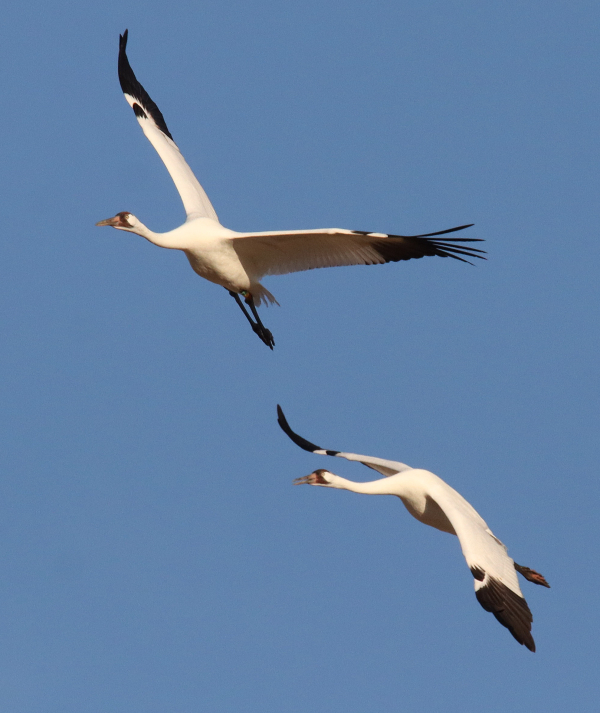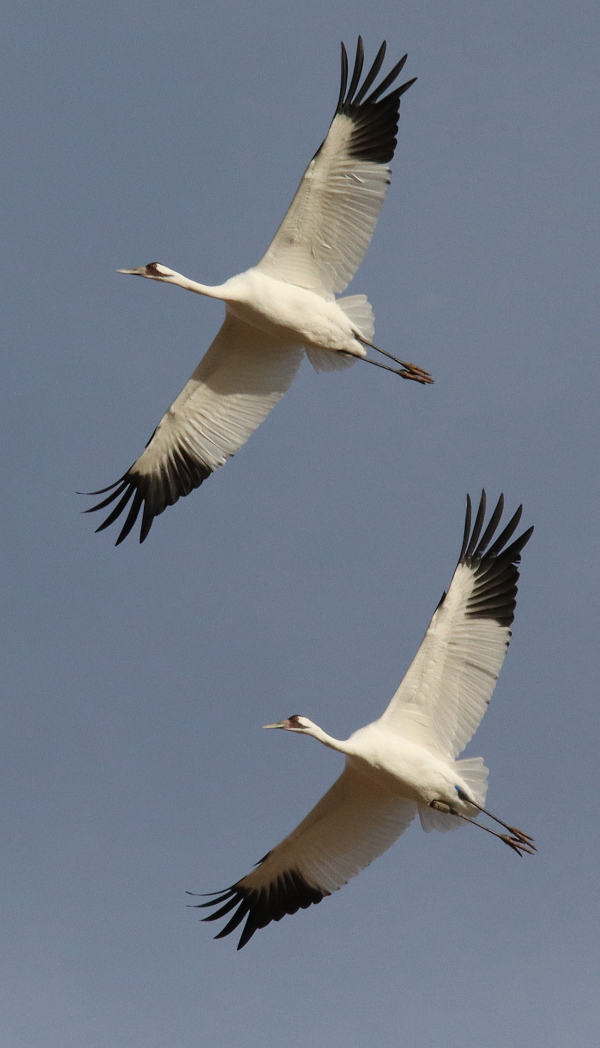
Reports of the first Whooping Crane sightings of fall provided added incentive to search an area that attracted as many as 38 Whooping Cranes a year ago.

|
With the possibility of seeing Whooping Cranes in mind, I topped the tall bluff above the shore of the Missouri River with my eyes intent on anything white. But there was only tan and gray in the shallow lagoons between me and the main river channel. That wasn’t unexpected or a game-changer, only the first step in searching out where migrating Whooping Cranes might be during my Wednesday afternoon birding drive. Then it was on to the sizeable floodplain pond combined with a check of area cornfields; then many miles of river valley habitat and the associated sky.
I was reacting to 2 messages from my friends Chris and Barb, who have a riverfront acreage about 25 miles south of Bismarck, the hometown where we all grew up and went to school together. A year earlier, almost to the day, we collectively monitored from 3 to 38 Whooping Cranes during migration stops that provided an amazing thrill for me, sightings that revealed much about these super-impressive cranes as they created some of my favorite photographs of birds. In response to my Monday text to see if any cranes had been sighted yet, Barb answered “We have Whoopers! Yesterday we saw 3, and today Chris observed 10!”
Hooray I thought, but Tuesday would be cloudy and I was publishing The Birding Wire, so Wednesday would be my first chance to drive the 2 hours west – something I intended to do anyway, needing a hair trim among other ‘big city’ activities. But on Tuesday I received an update: “no Whoopers today.” Oh well, I figured; I’ll do a thorough search Wednesday – and I did, but didn’t find any sign of Whooping Cranes. That’s OK, that’s usually been the case when following up on Whooping Crane sightings, and this was a small setback considering it was “early” and there could be many more Whooping Crane sightings to come.
What I did notice though, was that the cornfields adjacent to the river were not harvested yet, and that’s probably why the Whooping Cranes stayed and concentrated in such numbers as long as they did last November. Without access to harvested cornfields, it probably takes the most important ingredient out of the stopover puzzle – food.
Nonetheless, I had a very good birding drive from home to Bismarck, including the numbers of Tundra Swans at Cindy’s Lake. This was the first time there were more than 20 Tundras there, with more than 100 on hand Wednesday. West of there, at Wentz Lake I could see a very large flock of Snow Geese – perhaps the same geese that were feeding in an adjacent field a week earlier. But as I continued closer, more and more geese came into view from behind a low hill along the east shore – hundreds more, then thousands more! I estimated 10,000 on the spot, although that’s a broad ballpark number. Nonetheless, I spent a couple minutes enjoying the view emphasized by beautiful sky-blue water and taking a few photos of the big flock, that proved to have many Ross’s Geese among the Snows.
Another 15 miles or so down the line, incoming flocks of White-fronted Geese crossed my view and provided some photos at Napolean Lake, where they joined a large flock of about 400 White-fronts, a few Cackling Geese, and some Canada Geese. But the biggest flock of White-fronted Geese to date was obvious in 2 flocks at McKenzie Slough that combined for at least 1,000. Outside of Bismarck, I sighted a dark morph Rough-legged Hawk, the only raptor I observed Wednesday in addition to a Northern Harrier observed about halfway to the capitol city.
The next day, I received a text and cellphone photo from Barb that showed 7 Whooping Cranes flying high overhead, and a text from Chris that said they observed 3 Whoopers flying north about 10:15am and 7 Whooping Cranes flying south at 1:00pm. Well, perhaps there will be Whoopers in my life again another day, perhaps soon!
Article and Photographs by Paul Konrad